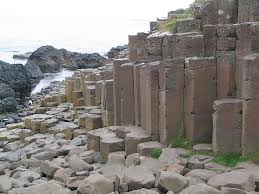How was the Giant’s Causeway Formed
Discover the origins of this geological phenomenon in Northern Ireland which consists of around 38,000 basaltic columns!
On the north-east coast of County Antrim in Northern Ireland lies an unusual rock formation which draws in millions of visitors from around the world every year. They flock to see a vast plateau of polygonal basalt columns – which are commonly known as the Giant’s Causeway – which looks like a carpet of enormous stepping stones extending out into the Irish Sea. The basalt pillars that make up this amazing rock formation dramatically range in size from a matter of centimeters to several metres high.
Although the Giant’s Causeway is so-named due to an ancient legend, its formation actually began up to 65 million years ago during the Tertiary period when volcanic activity forced tectonic plates to stretch and break. This caused magma to spew up from inside the Earth and spill out across the surface as lava.
The temperature of erupting lava can range from between 700 and 1,200 degrees Celsius (1,292 and 2,192 degrees Fahrenheit). However, upon contact with the surface it will immediately begin to cool. At first this cooling is extremely rapid and this results in a hardened crust forming on top of the superhot substance, which insulates the still liquid lava below.
Because the lava is now insulated the cooling becomes increasingly slow over time. While you could probably walk on the crust after just half an hour or so, thick lava flows can take a number of years to cool completely and solidify all the way through.
 Northern Ireland’s only UNESCO World Heritage Site
Northern Ireland’s only UNESCO World Heritage Site
Giant’s Causeway and Causeway Coast
While the temperature falls the lava begins to dry out, and it’s this drying that causes the solidifying lava to crack and form regular pillars of basalt rock.
The size and shape of each column is ultimately determined by the rate at which the lava actually cools and dries, and therefore the speed at which what’s called the ‘drying front’ moves.
Scientists from the University of Toronto discovered that the slower the cooling rate the larger the basalt columns that formed.
